Fleas are small, wingless parasites that feed on the blood of mammals and birds. They are known for their ability to jump long distances and are often found on pets such as cats and dogs. However, fleas can also infest other areas of the home, including carpets, bedding, and furniture.
Fleas are small, wingless insects that belong to the order Siphonaptera. They have a flattened body and are adapted for jumping, with long, powerful legs that allow them to leap up to 50 times their body length. Fleas have mouthparts adapted for piercing skin and sucking blood, and they are ectothermic, meaning that they rely on external heat sources to regulate their body temperature.
Understanding the flea life cycle is important for several reasons. First, it can help you to identify the source of a flea infestation and determine the best course of action for getting rid of the fleas. It can also help you to prevent future infestations, as knowing the various stages of the flea life cycle can help you to target your efforts at the most vulnerable points in the cycle. Finally, understanding the flea life cycle can help you to understand the potential health risks associated with fleas, as well as the best ways to protect yourself and your loved ones from these risks

Products to Eliminate and Get Rid of Fleas Life Cycle
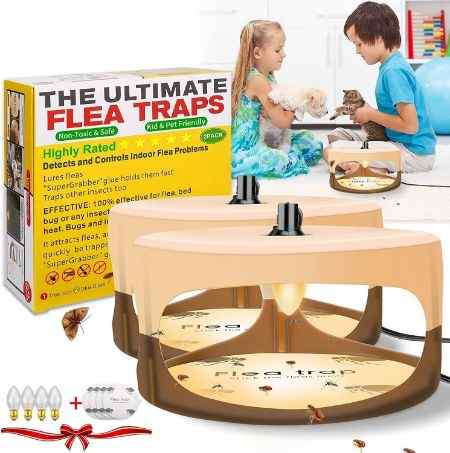
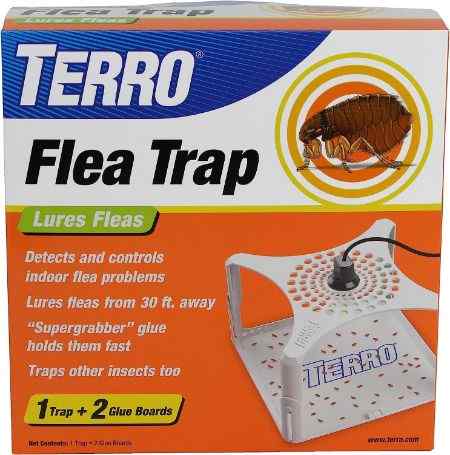
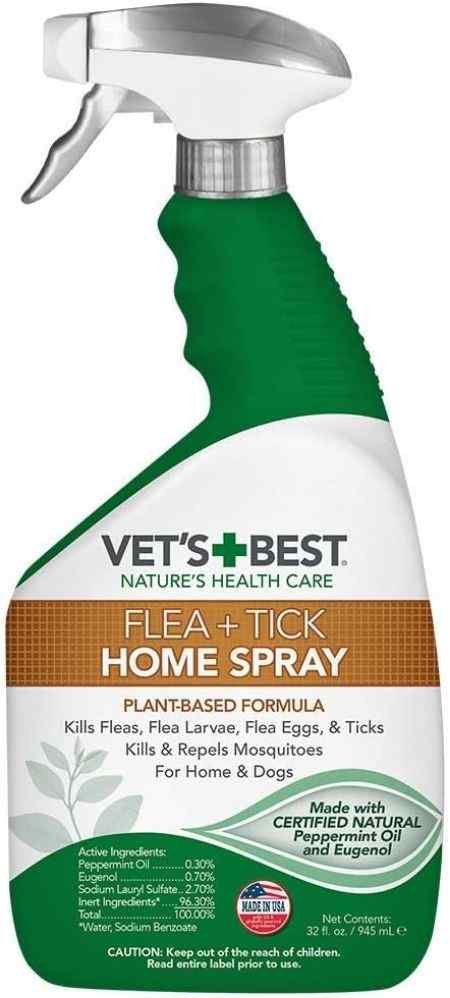
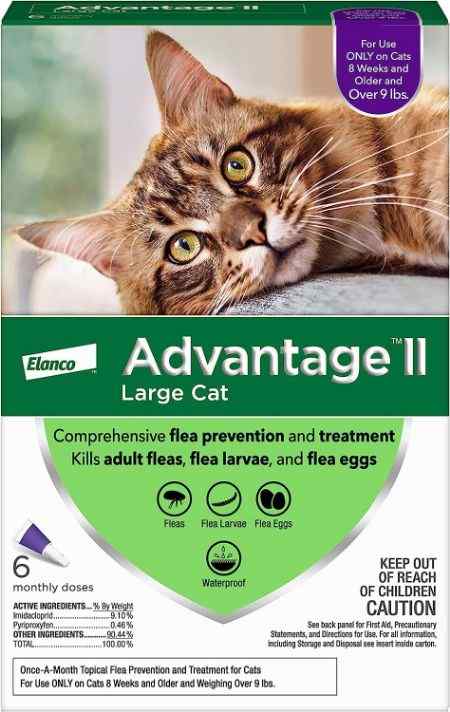
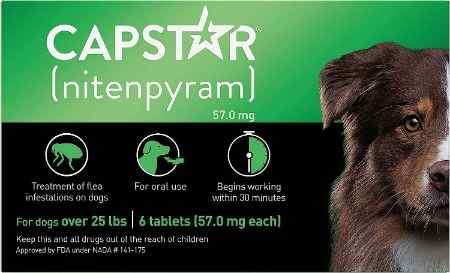
The Life Cycle of Fleas: From Egg to Adult in Three Weeks
Flea eggs are the first stage in the life cycle of fleas, which are small, wingless parasites that feed on the blood of mammals and birds. Flea eggs are laid by adult female fleas and are typically about 0.5 millimeters in size, making them difficult to see with the naked eye.
Description of flea eggs
Flea eggs are oval-shaped and white. They are smooth and translucent, with a thin, delicate shell. Flea eggs are sticky, which helps them adhere to the host animal’s fur or feathers. They are also highly resistant to desiccation or drying out, which allows them to survive in a variety of environments.
Where flea eggs are laid
Flea eggs are laid on the host animal’s skin or in its environment. Adult female fleas will lay their eggs in the fur or feathers of the host animal, or on bedding, carpets, and other surfaces where the host animal spends a lot of time. Flea eggs can also be found in the environment if the host animal has been in a location where fleas are present, such as in a park or a kennel.
Hatching Process
Flea eggs hatch into larvae within a few days to a week, depending on the temperature and humidity of the environment. The larvae are small, worm-like creatures that are about 1.5 millimeters in length. They are white or cream-colored and have a segmented bodies with tiny hairs that help them move through the environment.
After hatching, the larvae will begin to feed on organic matter, such as flea feces and other debris found in the environment. As they grow, they will spin a cocoon and pupate, eventually emerging as adult fleas. The entire process from egg to adult takes about two to three weeks, but it can vary depending on the environmental conditions.
It is important to note that flea eggs can be difficult to eliminate because they are so small and sticky. To effectively control fleas, it is necessary to treat both the host animal and its environment to kill the adult fleas and prevent new eggs from being laid. This can be done through the use of flea control products, such as topical treatments, collars, or oral medications, as well as by regularly washing bedding and vacuuming carpets and other surfaces where fleas may be present.
The Role of Flea Larvae in the Life Cycle: Description, Habitat, Feeding Habits, and Pupation
Flea larvae are the second stage in the life cycle of fleas, following the egg stage. Flea larvae are small, worm-like creatures that hatch from eggs laid by adult female fleas on the host animal’s skin or in its environment.
Description of flea larvae
Flea larvae are about 1.5 millimeters in length and have a segmented body with tiny hairs that help them move through the environment. They are white or cream-colored and have a tapered head and a swollen thorax. Flea larvae do not have eyes or legs, and they are not capable of biting or sucking blood.
Where flea larvae live
Flea larvae live in the environment, typically in areas where the host animal spends a lot of time, such as bedding, carpets, and other surfaces. They may also be found in the soil or leaf litter in outdoor areas where the host animal has been. Flea larvae are adapted to a variety of environments and can survive in a range of temperatures and humidity levels.
Feeding habits of flea larvae
Flea larvae are scavengers and feed on organic matter, such as flea feces and other debris found in the environment. They do not feed on the blood of their host animal. As they grow and develop, flea larvae will spin a cocoon and pupate, eventually emerging as adult fleas.
Development into pupae
The development of flea larvae into pupae is a complex process that involves several stages:
- Molting: Flea larvae will molt, or shed their skin, several times as they grow. This allows them to increase in size and develop new body segments.
- Spinning a cocoon: As the larvae mature, they will spin a cocoon around themselves using silk-like threads produced by glands in their mouthparts. The cocoon is sticky and helps to anchor the larvae in place.
- Pupation: Inside the cocoon, the larvae will undergo pupation, a process of metamorphosis that involves a radical transformation of the body. The pupal stage is a resting and dormant phase, during which the larvae will undergo structural and physiological changes that will prepare them for adult life.
- Emergence: After about a week to 10 days, the adult fleas will emerge from the pupal cocoon, ready to mate and lay eggs. The entire process from egg to adult takes about two to three weeks, but it can vary depending on the environmental conditions.
It is important to note that flea larvae can be difficult to eliminate because they are so small and often hidden in the environment. To effectively control fleas, it is necessary to treat both the host animal and its environment to kill the adult fleas and prevent new eggs from being laid. This can be done through the use of flea control products, such as topical treatments, collars, or oral medications, as well as by regularly washing bedding and vacuuming carpets and other surfaces where fleas may be present.
The Importance of the Pupal Stage in the Life Cycle of Fleas
The pupal stage is a transitional stage in the life cycle of a flea, during which the larva develops into an adult. Flea pupae are often found in the environment, where they are protected from predators and adverse weather conditions.
Description of Flea Pupae
Flea pupae are small, oval-shaped cocoons that measure about 3-5 mm in length. They are usually white or cream in color and have a smooth, shiny appearance. The pupae are surrounded by a thin layer of silk, which serves as a protective barrier.
Protection of the Pupae
During the pupal stage, fleas are vulnerable to predators and environmental stressors. To protect themselves, fleas spin a cocoon of silk around their pupae, which helps to camouflage them and keep them hidden from view. The silk cocoon also serves as a physical barrier, protecting the pupae from predators and environmental factors such as extreme temperatures, moisture, and UV radiation.
The Emergence of Adult Fleas
Once the pupae have matured, the adult fleas will emerge from the pupal stage and begin to search for a host. This process is known as “emerging” or “eclosion.” Adult fleas can sense the presence of a potential host through vibrations, heat, and carbon dioxide, and will quickly attach themselves to the host and begin feeding on its blood. Adult fleas can live for several months without a host, but they require a blood meal to reproduce and lay eggs.
Point to Note:
- The pupal stage is a transitional stage in the life cycle of a flea
- Flea pupae are small, oval-shaped cocoons that are white or cream and have a smooth, shiny appearance
- Flea pupae are protected by a thin layer of silk that serves as a camouflage and physical barrier
- Adult fleas emerge from the pupal stage and search for a host
- Adult fleas can live for several months without a host but need a blood meal to reproduce and lay eggs
The Life Cycle of Fleas: The Adult Fleas
The adult flea is the final stage in the flea’s life cycle, and it is capable of feeding, reproducing, and causing discomfort. Here are the characteristics, feeding habits, and reproductive capabilities of adult fleas:
Description of adult fleas
Adult fleas are small, wingless insects that are typically 1/8 to 1/16 inches long. They are dark brown or reddish and have a flattened body shape that allows them to move easily through the fur of their host animals.
Feeding habits of adult fleas
Adult fleas feed on the blood of their host animals, and they are most commonly found on pets such as dogs and cats. They use their sharp, piercing mouthparts to penetrate the skin of their host and extract blood. Fleas can survive for several months without feeding, but they need to feed regularly to reproduce.
Reproductive capabilities of adult fleas
Adult fleas are capable of reproducing quickly and in large numbers. Female fleas can lay up to 50 eggs per day, and the eggs hatch into larvae within a few days. The larvae then develop into pupae, and finally into adult fleas. This rapid life cycle allows flea populations to grow quickly and become established in a short period.
In summary, adult fleas are small, wingless insects that feed on the blood of their host animals and are capable of reproducing quickly and in large numbers. They are a common pest that can be found on pets and in homes.
Flea Control and Prevention Strategies for Keeping Your Home and Pets Flea-Free
Flea Control and Prevention
Several strategies can be employed to prevent flea infestations in your home or on your pets:
- Keep your home clean and vacuum regularly: Vacuuming regularly, especially in areas where your pets spend the most time, can help remove any eggs or larvae that may be present.
- Use flea prevention products: There are a variety of flea prevention products available, including flea collars, shampoos, and topical treatments. These products can be effective in preventing fleas from attaching to your pets and reproducing.
- Treat your yard: If you have a yard, consider using a flea control product on the grass and in areas where your pets spend time. This can help prevent fleas from attaching to your pets when they are outside.
- Keep your pets away from other animals: If possible, try to keep your pets away from other animals that may be infested with fleas. This can help prevent your pets from coming into contact with fleas and getting infested.
Treatment Options for Flea Infestations
If your pets or home become infested with fleas, there are several treatment options available:
- Use flea prevention products: If you were already using flea prevention products, you may need to increase the frequency of application or switch to a different product.
- Wash bedding and soft furnishings: Wash all bedding and any soft furnishings that your pets come into contact with to remove any fleas or eggs that may be present.
- Treat your home: There are a variety of flea control products available for use in the home, including sprays, foggers, and powders. These products can help kill any adult fleas and prevent the development of eggs and larvae.
- Seek professional help: If you are unable to effectively treat a flea infestation on your own, consider seeking the help of a professional pest control company. They will have the knowledge and resources to effectively eliminate fleas from your home.
How Long Does it Take for Flea Larvae to Become Adults (Flea Life Cycle Time)
This is referred to as the “Flea Life Cycle Time”, it typically takes flea larvae about two to three weeks to mature into adults, depending on environmental conditions such as temperature and humidity. Here is a list of the different stages of the flea life cycle:
- Egg: Fleas lay their eggs on the host animal or in the environment where the host animal spends time.
- Larva: Flea larvae hatch from the eggs and begin to feed on organic matter, such as adult flea feces and other debris found in the environment.
- Pupa: After two to three weeks of development, flea larvae spin a cocoon and enter the pupal stage.
- Adult: After about a week in the pupal stage, the flea emerges as an adult.
It’s important to note that the length of each stage of the flea life cycle can vary depending on environmental conditions. For example, fleas may develop more quickly in warmer and more humid environments.
Steps to Break the Flea Life Cycle
To control fleas, it is important to treat affected animals, clean and vacuum regularly, and use flea preventatives. An insect growth regulator can also be effective in interrupting the flea life cycle. Here is how to break the flea life cycle. These steps can help prevent infestations and protect your pets and home from the negative effects of fleas:
Treat all affected animals
If your pets have fleas, it is important to treat them with a flea control product that is appropriate for their species and age. This will help to kill adult fleas and prevent them from laying eggs.
Clean and vacuum regularly
Fleas lay their eggs in the environment, so it is important to keep your home clean and free of clutter. Vacuum carpets, upholstery, and any other areas where your pets spend time. Be sure to empty the vacuum bag or canister after each use to prevent the eggs from hatching.
Wash bedding and clothing
If your pets sleep on bedding or clothing, be sure to wash these items in hot water to kill any fleas or eggs that may be present. It is an important step to help break the flea life cycle.
Use an insect growth regulator (IGR)
An IGR is a chemical that interferes with the development of flea eggs and larvae. It can be applied as a spray or incorporated into your pet’s flea control product.
Use a flea preventative
There are a variety of flea preventatives available to help break the flea life cycle. including topical treatments, oral medications, and collars. These products work by killing adult fleas and preventing eggs from hatching.
By following these steps, you can break the flea life cycle and keep your home and pets free of these pesky insects. Remember to follow the instructions on any flea control product you use, and consult with a veterinarian if you have any concerns.
Life Cycle of a Flea Without a Host
The life cycle of a flea without a host is relatively short and consists of four stages: egg, larva, pupa, and adult.
Flea Egg
Flea eggs are small, oval-shaped, and white or translucent. They are laid on the host’s skin or in their environment, such as on bedding or carpets. Flea eggs can take anywhere from one to ten days to hatch, depending on the temperature and humidity of the environment.
Flea Larva
When the eggs hatch, they release small, worm-like larvae. Flea larvae are about 1/8 inch long and are white or translucent. They feed on organic debris and the feces of adult fleas, which contain the undigested blood of the host. Flea larvae can take anywhere from five to twenty days to develop into the next stage of their life cycle, depending on the temperature and humidity of their environment.
Pupa Flea
When the flea larvae are ready to pupate, they spin a cocoon around themselves and enter the pupal stage. Flea pupae are about 1/4 inch long and are encased in a silken cocoon. They can remain in this stage for several weeks to several months, depending on the temperature and humidity of their environment.
Adult Flea
When the flea pupae are fully developed, they emerge as adult fleas. Adult fleas are about 1/8 inch long, reddish-brown in color, and have long, slender legs that enable them to jump great distances. Adult fleas are blood-sucking insects that feed on the blood of their hosts. Without a host, adult fleas will eventually die due to starvation.
It is important to note that fleas require a host to complete their life cycle. Without a host, fleas will not be able to lay eggs or reproduce, and their population will eventually die off.
Fleas are most commonly found on pets, such as dogs and cats, but they can also infest other animals and humans. To prevent flea infestations, it is important to regularly groom and treat pets with flea-prevention products, as well as regularly clean and vacuum the home to remove any flea eggs or larvae.
Life Cycle of Fleas on Humans
Flea life cycles can be complicated and complex, especially when it comes to fleas that infest humans. These annoying bugs have a special way of reproducing that lets them quickly multiply and spread, making it hard to get rid of them once they are there.
The egg stage is the initial step in the life cycle of fleas in humans. Female fleas lay their eggs on their host, which is a person in this example. The eggs are small and white, and they frequently fall off the host into the surroundings. Carpeting, bedding, and even outdoor locations where the host spends time are examples of this.
The larval stage is the next stage. Larvae hatch from the eggs and feed on organic stuff in their surroundings. Flea feces, which are generated by adult fleas and contain partially digested blood, are one example. The larvae build cocoons and enter the pupal stage as they grow and mature.
For fleas, the pupal stage is a time of relaxation and development. They remain in their cocoons until they detect vibrations or temperature changes that indicate the presence of a possible host. When a host is found, the adult fleas emerge from their cocoons and begin their hunt for a blood meal.
The adult stage is the last stage of a flea’s life cycle in humans. Female fleas mate with male fleas and lay hundreds of eggs, resuming the cycle. To make matters worse, adult fleas can live for several months, which means that an untreated flea infestation might last for a long period of time.
Common FAQs About The Life Cycle of Flea
What is the flea life cycle?
The flea life cycle consists of four stages: egg, larva, pupa, and adult.
How long does each stage of the flea life cycle last?
The egg stage lasts about 2 days to 2 weeks, depending on the temperature and humidity. The larva stage lasts about 5 to 11 days. The pupal stage lasts about 5 to 11 days. The adult stage lasts about 100 to 140 days.
What do fleas eat during each stage of their life cycle?
During the egg and larval stages, fleas do not eat. They rely on the nutrients stored in their bodies from their mother’s blood meal. During the pupal stage, fleas do not eat. As adults, fleas feed on the blood of their host, which can be a human, dogs, cat, or other mammals.
How do fleas reproduce?
Female fleas lay eggs after they have taken a blood meal. The eggs are laid on the host or in the host’s environment, such as on bedding or carpets. The eggs hatch into larvae, which then spin cocoons and pupate. Once they emerge as adults, the fleas are ready to mate and start the cycle over again.
Ways I can prevent fleas from infesting my home or yard?
There are several steps you can take to prevent fleas from infesting your home or yard:
- Keep your pets on a flea preventative medication or collar.
- Regularly groom and bathe your pets to remove any fleas or eggs.
- Vacuum your floors and furniture regularly to remove flea eggs and larvae.
- Wash your bedding and pet bedding in hot water regularly.
- Keep your yard clean and free of debris, as fleas can lay eggs in tall grass or piles of leaves.
How can I get rid of fleas in my home or on my pets?
To get rid of fleas in your home, you can use a flea bomb or fogger, or hire a professional pest control company. To get rid of fleas on your pets, you can use a flea preventative medication or collar, or consult your veterinarian for treatment options. It’s important to treat both your pets and your home to effectively eliminate a flea infestation.
How long is the life cycle of a cat flea?
The life cycle of a cat flea typically lasts about 3-4 weeks but can vary depending on environmental factors.
Are fleas on cats and dogs the same?
Fleas on cats and dogs are generally the same species, although there are a few different types of fleas that can infest pets. The most common type of flea found on cats and dogs is the cat flea (Ctenocephalides felis).
How long do cat and dog fleas live?
Adult fleas on cats and dogs usually live for about 2-3 months, although they can survive for longer periods if conditions are favorable.
Are cat fleas hard to get rid of?
Cat fleas can be difficult to get rid of because they can reproduce rapidly and can hide in a variety of locations, including in your pet’s fur, bedding, and carpets. To effectively get rid of fleas, it is important to use a combination of approaches, such as using flea control products on your pet, washing bedding and vacuuming carpets, and possibly seeking professional pest control services.
What kills all stages of fleas?
Several products can kill all stages of fleas, including adult fleas, eggs, and larvae. These products include topical flea control products, oral medications, and sprays that can be applied to your pet or your home.
What kills flea eggs instantly?
To kill flea eggs instantly, you can use products that contain chemicals such as pyrethrins, pyrethroids, or spinosad. These chemicals can be found in many flea control products and can be effective at killing flea eggs when used according to the product’s instructions.
How do you break the flea life cycle?
To break the flea life cycle, it is important to eliminate all stages of the flea life cycle, including eggs, larvae, and adult fleas. This can be achieved by using flea control products on your pet and by vacuuming and washing bedding and other household items to remove eggs and larvae.
How do you keep flea eggs from hatching?
To prevent flea eggs from hatching, you can use flea control products that contain insect growth regulators (IGRs). These chemicals interfere with the flea’s development and prevent eggs from hatching.
Can flea eggs hatch on furniture?
Flea eggs can hatch on furniture if the furniture is infested with adult fleas that lay eggs. To prevent this from happening, it is important to use flea control products and to regularly vacuum and wash bedding and other household items to remove eggs and larvae.
Conclusion: Life Cycle of Fleas: From Egg to Adult
In conclusion, understanding the flea life cycle is important for effectively controlling flea infestations. Fleas go through four stages of development: egg, larva, pupa, and adult. Fleas lay their eggs on the host animal, and the eggs hatch into larvae within a few days. Larvae feed on organic matter and eventually spin cocoons, where they pupate. After about a week, adult fleas emerge from the cocoons and begin the cycle anew.
One key aspect of flea control is breaking this cycle by eliminating the eggs, larvae, and pupae. This can be achieved through a combination of flea treatment products, such as topical solutions and oral medications, and environmental measures, such as regular vacuuming and washing bedding and carpets.
Understanding the flea life cycle can also help pet owners identify and address infestations early on before they become more severe. Fleas can transmit diseases and cause discomfort and irritation for both pets and humans, so it is important to keep them under control. With the right knowledge and approach, flea infestations can be effectively managed and prevented.